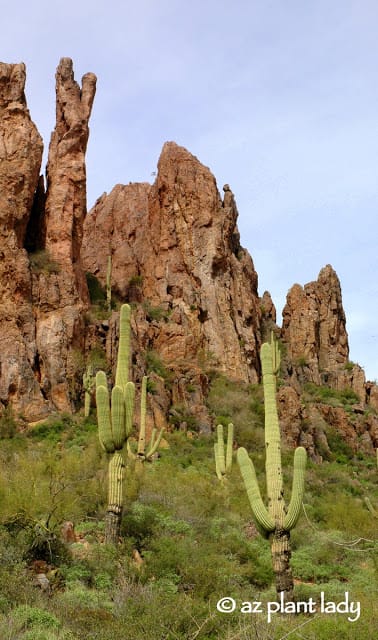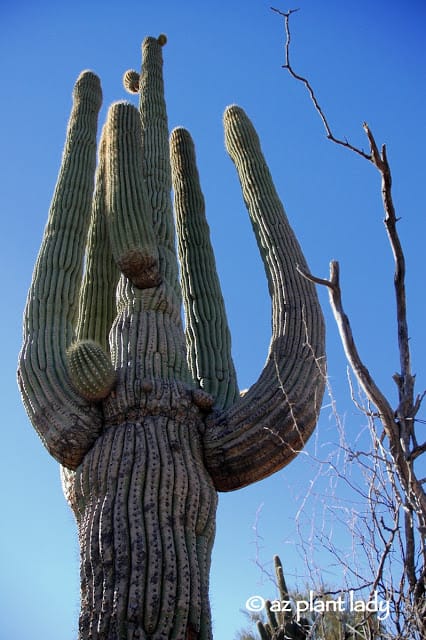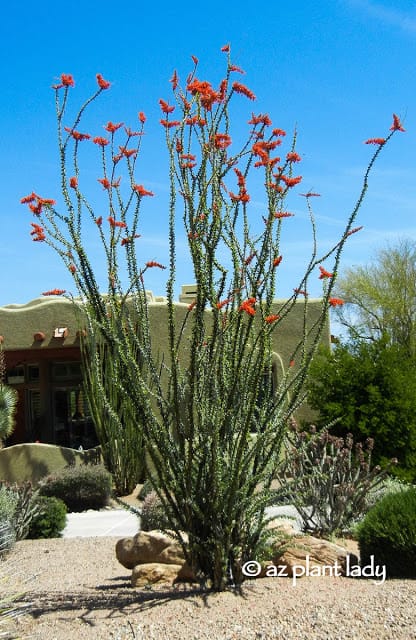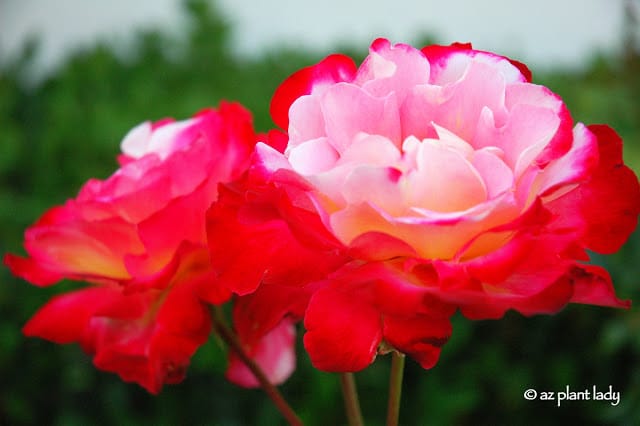
Fall Rose, ‘Double Delight’
In the Desert Southwest, we are blessed with two different blooming seasons – spring and again in fall.
While two bloom seasons is generally one more than many regions experience, roses don’t enjoy the heat of summer and go into summer dormancy. That means that they just exist and don’t grow or bloom significantly. Their leaves may show signs of sunburn.
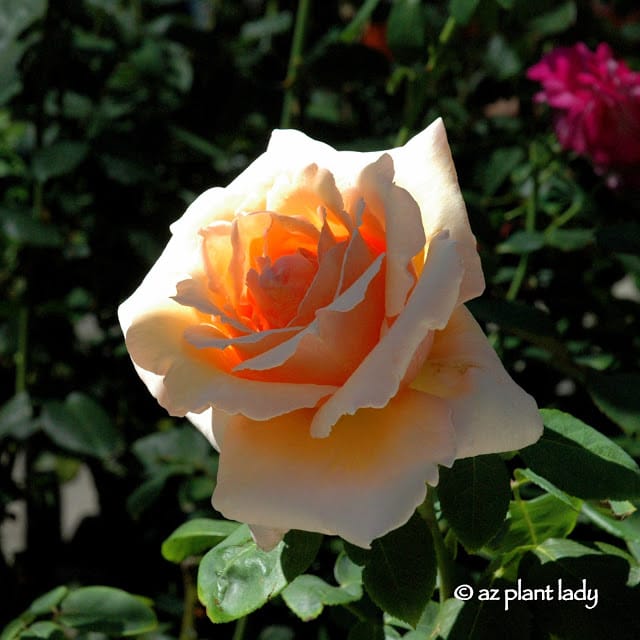
Fall Rose, ‘Medallion’
However, once September arrives and the days begin to grow shorter and temperatures begin to cool, it is time to lightly prune your rose bushes, which will stimulate new growth.
Begin by pruning back 1/4 of the top growth, removing sunburned foliage and any flowers present.
As always, prune back to an outward facing bud at an angle of 45 degrees. Seal any pruning cuts larger than the diameter of a pencil with Elmer’s glue to prevent borers.
Fall is also time to fertilize roses in preparation for their fall bloom season. Apply an organic fertilizer formulated for roses. Afterward, be sure to water in well.
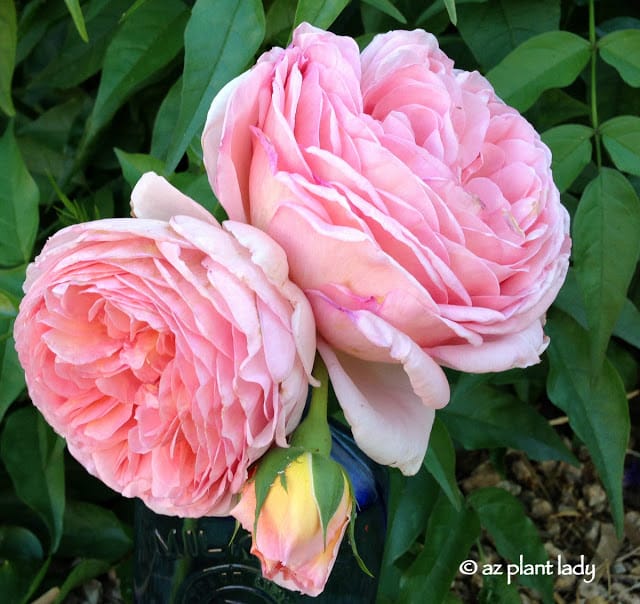
‘Abraham Darby’
**For those that want to go the extra step, I would recommend soil amendments such as compost and manure in addition to rose fertilizer, which results in greater growth, lush foliage and blooms over the long term.
To do this, first make 4 – 5, six-inch deep holes around each rose, placing them at least 1 ft. from the center (I use the end of a broom handle for this). Then apply a mixture of aged steer manure and alfalfa pellets (rabbit food) and pour into each hole. Water in well.
The aged manure improves the soil structure and slowly releases nutrients. The alfalfa pellets release a type of alcohol as they break down that roses just love.
By lightly pruning and fertilizing in early fall, you’ll enjoy a fall filled with beautiful roses.


